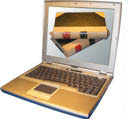Monday, 17 October 2005
When I commented on Stevens v Sony (here, and then here), I focused on the issue of the meaning of the anti-circumvention provisions. As others have pointed out (here, and Warwick Rothnie here), other matters were raised in the case – in particular, the meaning of reproduction in material form, or ‘copy’. William Patry has some interesting views on the issue today.
Copyright owners, and their representatives, often act as if the coverage of every electronic copy was something that was self-evidently, obviously, something that should be within the scope of their exclusive rights. Michael Williams, from Gilbert & Tobin, is one person whom I’ve heard make this argument (at IPSANZ Annual Conference, last year, on a panel I also was on).
In that context, I’m glad to see someone like William Patry – someone not known for his ‘anti-copyright’ views (because he doesn’t have them, if anything he can be a bit overly protective in his views), say this:
‘A work is “fixed†in a tangible medium of expression when its embodiment in a copy or phonorecord, by or under the authority of the author, is sufficiently permanent or stable to permit it to be perceived, reproduced, or otherwise communicated for a period of more than transitory duration. A work consisting of sounds, images, or both, that are being transmitted, is “fixed†for purposes of this title if a fixation of the work is being made simultaneously with its transmission.
This definition was intended to protect authors at the copyrightability stage, but after MAI v. Peak, it has grown into a monstrous weapon by which every act of buffering or caching results in a “fixed” “copy” in the infringement sense of that last term. It beggars the imagination that the Founders would have deemed such acts infringing: they are merely a technological ends to a means.
We may be at the end of the road conceptually and semantically when “copy” can be impressed into banning all sampling and imposing liability for buffering and caching no matter the end purpose.
Leave a Reply
Do not post material that is defamatory or obscene, that infringes any third party's copyrights, trademarks or other proprietary rights, or that violates any other right of any other person.
We reserve the right to remove or edit any comment for any reason.
Note: Posting more than two links in a comment may cause it not to appear because it will be submitted for moderation. Also, links in comments will not be counted by Google, so spamming is pointless.
